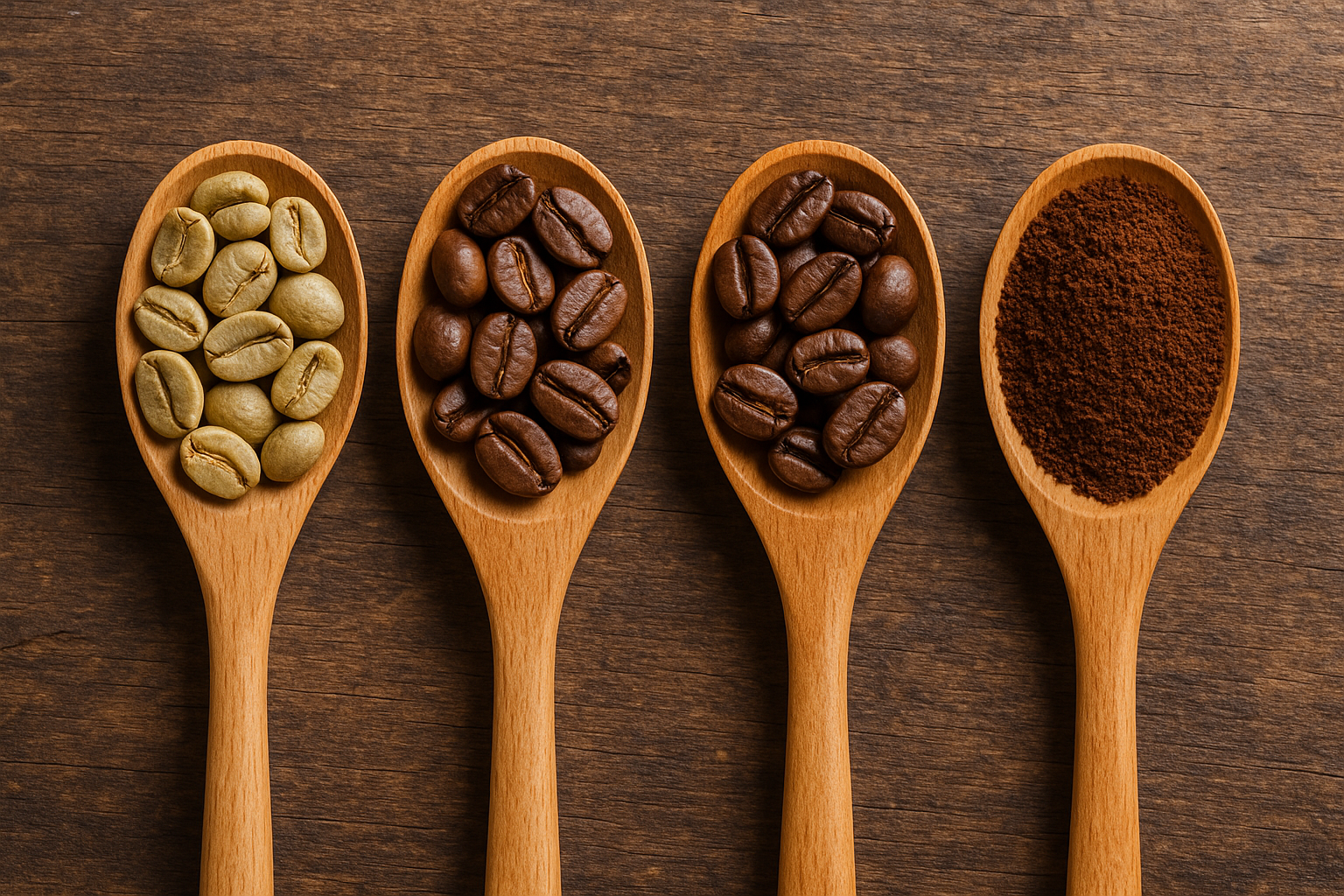For any barista — whether at home or working in a café — understanding coffee beans is like learning the language of your craft. Everything from the origin, variety, processing method, and roast level influences how coffee will taste in the cup. This guide will give you the essential knowledge you need to talk (and taste) coffee like a pro.
What Are Coffee Beans, Really?
Coffee beans are actually seeds from the fruit of the coffee plant, commonly known as the coffee cherry. After the cherries are picked, the seeds are extracted, processed, roasted, and finally ground to make the beverage we know and love.
The Two Main Types of Coffee Beans
There are over 100 species of coffee, but two dominate the global market:
1. Arabica (Coffea arabica)
- Flavor: Smooth, complex, often with fruity or floral notes
- Caffeine: Lower than Robusta (about 1.2%)
- Growing Altitude: Higher (1,000–2,000 meters)
- Price: Generally more expensive
- Popularity: About 60–70% of global coffee
Arabica beans are considered higher quality and are the most commonly used in specialty coffee shops.
2. Robusta (Coffea canephora)
- Flavor: Earthy, bitter, sometimes nutty
- Caffeine: Higher than Arabica (about 2.2%)
- Growing Altitude: Lower (200–800 meters)
- Price: More affordable
- Popularity: Around 30–40% of the global market
Robusta is often used in instant coffee and espresso blends for added crema and body.
Key Factors That Affect Coffee Flavor
Every coffee bean has a unique profile depending on several variables:
1. Origin (Country and Region)
Where coffee is grown drastically influences flavor. For example:
- Ethiopia: Floral, citrusy, tea-like
- Colombia: Balanced, nutty, chocolatey
- Brazil: Full-bodied, low acidity, nutty
- Kenya: Bright, juicy, berry-forward
- Indonesia: Earthy, herbal, low acidity
Each region has its own altitude, soil type, and microclimate that contributes to flavor complexity.
2. Variety (Cultivar)
Just like wine grapes, coffee has different varieties. Examples include:
- Bourbon: Sweet and balanced
- Typica: Classic coffee profile
- Geisha: Floral and aromatic, very high-end
- SL28/SL34: Known for high acidity and complexity (often found in Kenya)
Baristas in specialty cafés often highlight variety on menus.
3. Processing Method
How the bean is removed from the cherry greatly affects the final cup.
- Washed (Wet): Clean, bright, high acidity
- Natural (Dry): Fruity, heavier body, more sweetness
- Honey (Semi-washed): Balanced, with some fruit and clarity
- Anaerobic or Experimental: Unique, funky, and sometimes very bold flavors
Processing adds character. A natural Ethiopia tastes wildly different from a washed Colombian, even if roasted similarly.
4. Roast Level
Roasting transforms green coffee into aromatic brown beans. Roast level affects aroma, body, and acidity.
- Light Roast: Retains original flavors, higher acidity
- Medium Roast: Balanced, versatile, great for pour-overs
- Dark Roast: Roasty, bitter, often oily, good for espresso or milk drinks
As a barista, knowing how roast level interacts with your brewing method is crucial.
How to Read a Coffee Bag
When choosing beans, pay attention to these labels:
- Origin: Country, region, sometimes farm
- Variety: Arabica type (e.g., Bourbon, Caturra)
- Process: Washed, Natural, etc.
- Roast Date: Fresh is best (within 2–4 weeks)
- Flavor Notes: Helps guide your expectations (e.g., chocolate, red berry, citrus)
Tip: Avoid “best before” dates — they don’t guarantee freshness.
Tasting Coffee Like a Barista
Baristas train their palates to detect subtle flavor differences. Here’s how to start:
- Use a consistent brew method
- Smell the dry grounds and brewed coffee
- Taste while slurping (to aerate the coffee)
- Notice the balance between acidity, body, sweetness, and bitterness
- Compare coffees side-by-side when possible
This is called cupping, and it’s a valuable skill that gets better with practice.
Experimenting With Different Beans
Try rotating through beans from different origins and processing methods. Some suggestions:
- Start with a washed Colombian or Guatemalan for balance
- Try a natural Ethiopian for fruit-forward notes
- Explore a Robusta blend to understand its effect on crema and bitterness
- Challenge yourself with a light-roasted Kenyan for high acidity
Keep a coffee journal to note preferences and patterns in what you enjoy.
How This Knowledge Helps Baristas
Understanding beans allows you to:
- Make better coffee by adjusting brew methods for each bean
- Explain coffee confidently to customers
- Create flavor profiles in espresso blends
- Troubleshoot extraction issues
- Curate offerings for rotating café menus
It also makes your job more fun — because each bag of beans becomes a new discovery.
The Journey Begins With the Bean
Every skilled barista knows that great coffee starts with great beans. By learning how to identify, taste, and work with different types of coffee beans, you build the foundation for everything else — from espresso to latte art. Whether you’re at home or behind a café bar, knowing your beans is the first step toward coffee mastery.
